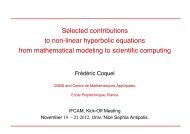The construction of the wonderful canon of logarithms
The construction of the wonderful canon of logarithms
The construction of the wonderful canon of logarithms
You also want an ePaper? Increase the reach of your titles
YUMPU automatically turns print PDFs into web optimized ePapers that Google loves.
8<br />
1<br />
Construction <strong>of</strong> <strong>the</strong> Canon.<br />
3 S, 4 S, &c., are said to decrease geometrically,<br />
because in equal times <strong>the</strong>y are diminished by<br />
unequal spaces similarly proportioned. Let <strong>the</strong><br />
sine T S be represented in numbers by looooooo,<br />
I S by 9000000, 2 S by 8100000, 3 S by 7290000,<br />
4 S by 6561000; <strong>the</strong>n <strong>the</strong>se numbers are said to<br />
decrease geometrically, being diminished in equal<br />
times by a like proportion.<br />
25. Whence a geometrically moving point approaching a<br />
fixed one has its velocities proportionate to its distances<br />
from <strong>the</strong>fixed one.<br />
Thus, referring to <strong>the</strong> preceding figure, I say<br />
that when <strong>the</strong> geometrically moving point G is at<br />
T, its velocity is as <strong>the</strong> distance T S, and when G<br />
is at I its velocity is as i S, and when at 2 its<br />
velocity is as 2 S, and so <strong>of</strong> <strong>the</strong> o<strong>the</strong>rs. Hence,<br />
whatever be <strong>the</strong> proportion <strong>of</strong> <strong>the</strong> distances T S,<br />
I S, 2 S, 3 S, 4 S, &c., to each o<strong>the</strong>r, that <strong>of</strong> <strong>the</strong><br />
velocities <strong>of</strong> G at <strong>the</strong> points T, i, 2, 3, 4, &c,, to<br />
one ano<strong>the</strong>r, will be <strong>the</strong> same.<br />
For we observe that a moving point is declared<br />
more or less swift, according as it is seen to be<br />
borne over a greater or less space in equal times.<br />
Hence <strong>the</strong> ratio <strong>of</strong> <strong>the</strong> spaces traversed is necessarily<br />
<strong>the</strong> same as that <strong>of</strong> <strong>the</strong> velocities. But <strong>the</strong><br />
ratio <strong>of</strong> <strong>the</strong> spaces traversed in equal times, T i,<br />
I 2, 2 3, 3 4, 4 5, &c., is that <strong>of</strong> <strong>the</strong> distances T S,<br />
I S, 2 S, 3 S, 4 S, &c[*] Hence it follows that<br />
<strong>the</strong> ratio to one ano<strong>the</strong>r <strong>of</strong> <strong>the</strong> distances <strong>of</strong> G from<br />
S, namely T S, i S, 2 S, 3 S, 4 S, &c., is <strong>the</strong><br />
same as that <strong>of</strong> <strong>the</strong> velocities<br />
T, I, 2, 3, 4, &c., respectively.<br />
<strong>of</strong> G at <strong>the</strong> points<br />
[*] It is evident that <strong>the</strong> ratio <strong>of</strong> <strong>the</strong> spaces traversed<br />
T I, I 2, 2 3, 3 4, 4 5, .&c., is that <strong>of</strong> <strong>the</strong> distances T S,<br />
iS,


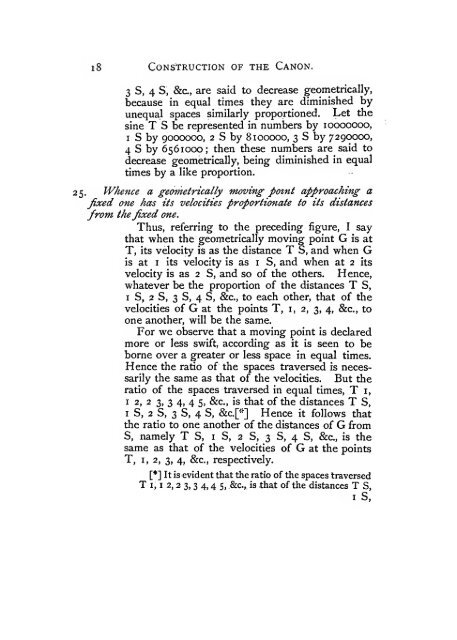
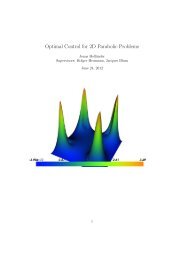
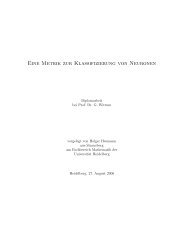
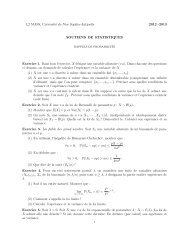
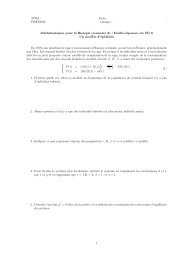


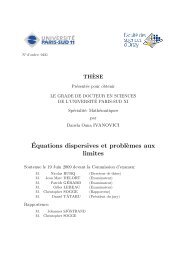
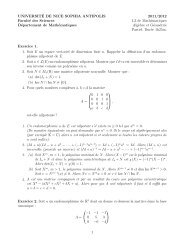
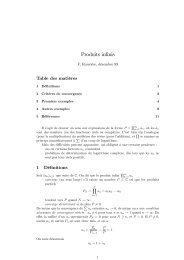
!['eries enti\`eres (+ [D78 Th d'Abel angulaire])](https://img.yumpu.com/14067031/1/184x260/eries-entieres-d78-th-dabel-angulaire.jpg?quality=85)
